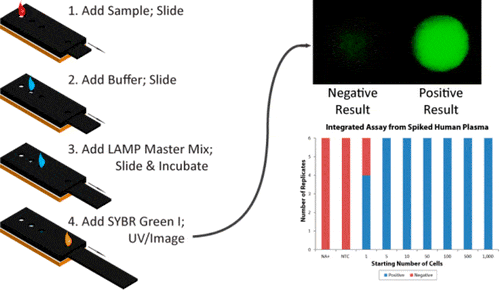Paper Machine That Costs $2 Helps Diagnose Diseases - Harvard Research
A team of researchers from the Department of Chemistry and Chemical Biology at Harvard University have set out to revolutionize the way diseases are diagnosed in remote locations across the Earth. Most modern techniques of diagnosis need analysis of the DNA from a patient's blood sample. The major problem with deploying this technology to remote places it that it is a long multiple step process that needs the presence of precisely controlled temperatures for preparing and analyzing the sample. With the new, simplified method devised by Harvard University researchers, a Paper Machine that costs only $2 can be used to diagnose diseases as complex as cancer.
The research work conducted by John Connelly, Jason Rolland and George Whitesides from Harvard involves reduction of steps required for blood sample preparation and DNA analysis and detection using a low-cost hand-held paper machine. The machine can determine with high accuracy if there's E.coli bacteria present in a blood test sample. The results can be read using UV light and a smartphone camera.

The researchers identified the flaw with the deployment of clinical tests requring high sensitivity and specificity and decided to eliminate them with their research work. Their new prototype device called "Paper Machine" integrates paper microfluidics (to enable fluid handling) and a multilayer structure, or a "paper machine", that allows a central patterned paper strip to slide in and out of fluidic path.
This method allows for the introduction of sample, wash buffers, amplification master mix, and detection reagents with minimal pipetting, in a hand-held, disposable device intended for point-of-care use in an environment where resources are limited.
The team is now working on making the Paper Machine simpler to use so that anyone in remote location can perform blood tests locally without much hassle.
Source: #-Link-Snipped-#
The research work conducted by John Connelly, Jason Rolland and George Whitesides from Harvard involves reduction of steps required for blood sample preparation and DNA analysis and detection using a low-cost hand-held paper machine. The machine can determine with high accuracy if there's E.coli bacteria present in a blood test sample. The results can be read using UV light and a smartphone camera.

The researchers identified the flaw with the deployment of clinical tests requring high sensitivity and specificity and decided to eliminate them with their research work. Their new prototype device called "Paper Machine" integrates paper microfluidics (to enable fluid handling) and a multilayer structure, or a "paper machine", that allows a central patterned paper strip to slide in and out of fluidic path.
This method allows for the introduction of sample, wash buffers, amplification master mix, and detection reagents with minimal pipetting, in a hand-held, disposable device intended for point-of-care use in an environment where resources are limited.
The team is now working on making the Paper Machine simpler to use so that anyone in remote location can perform blood tests locally without much hassle.
Source: #-Link-Snipped-#
0
